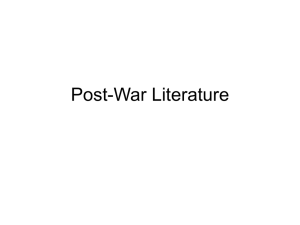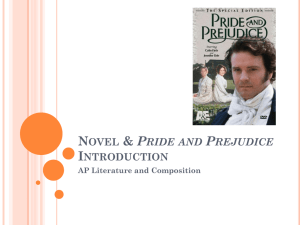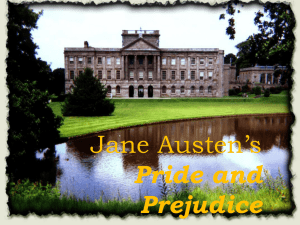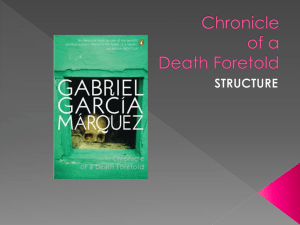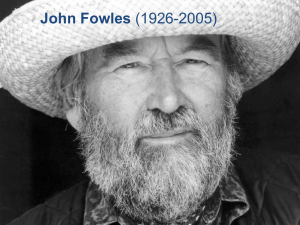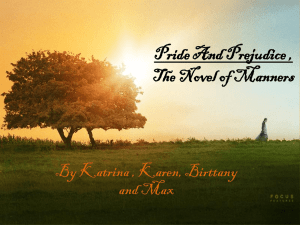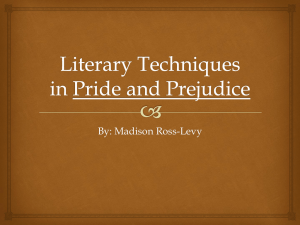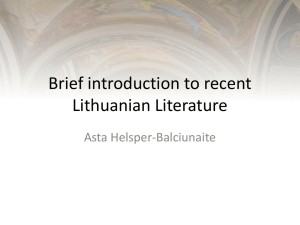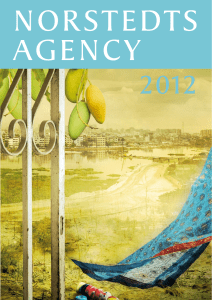Early Nineteenth-century Fiction: Introduction
advertisement
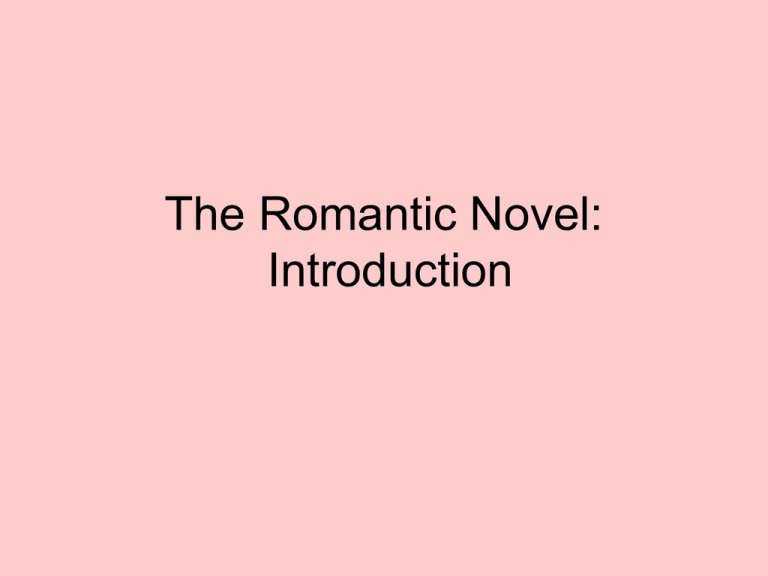
The Romantic Novel: Introduction Outline • The landscape of fiction in the late eighteenth and early nineteenth centuries • Historical development of the novel • The importance of Jane Austen and of Sir Walter Scott • The place of Maria Edgeworth The landscape of fiction • The late eighteenth and early nineteenth centuries – the Romantic period – ‘one of the most fertile, diverse and adventurous periods of novel-writing in English history. . . . The literary situation was exceptionally fluid’ (T. Eagleton, The English Novel (2005), p. 94) • Diverse forms of fiction: realist novel; Gothic fiction; romances; epistolary novels; regional and national tales; the novel of travel, etc. The landscape of fiction • The state of fiction in the eighteenth century: Defoe, Robinson Crusoe and Swift, Gulliver’s Travels as novels . . . • Eagleton: ‘the novel starts out as a rather crude kind of literary form, which can handle plot (Fielding) or psychology (Richardson), but not both at the same time’ (ibid., p. 94) Historical development of the novel • The novel a second-class literary form at the beginning of the Romantic period • The novel becomes the dominant literary form shortly after the Romantic period has ended • Romantic-era fiction – British fiction in transition Historical development of the novel • The rise of the realist novel like a story told in a realist novel – movement from disunity to integration • Classical realism: e.g. C. Brontë, Jane Eyre (1847); G. Eliot, Middlemarch (187172) • The story of the novel a story of the realist novel’s assimilation and ‘polishing off’ of the disorder of Romantic-era fiction Historical development of the novel • The return of ‘disorder’ largely after the triumph represented by Middlemarch – sensation fiction; thrillers; escapist fantasies, etc. Jane Austen and Walter Scott • Pivotal figures within the context of ‘British fiction in transition’ • Both Tories – in their hands the novel is transmitted on to becoming dominantbecause-respectable • Plot (Fielding) + Psychology (Richardson) = Jane Austen Jane Austen and Walter Scott • Austen’s novelistic virtues: narrative reliability; polished prose; incorporation of romance into realism (see the moral view of fiction as ‘falsehood’ or ‘lies’) • Austen’s work amounts to a call to take the novel seriously as a literary form Austen, Northanger Abbey (1818), vol. 1, ch. 5 • ‘And what are you reading, Miss -?’ ‘Oh! it is only a novel!’ replies the young lady . . . or, in short, only some work in which the greatest powers of the mind are displayed, in which the most thorough knowledge of human nature, the happiest delineation of its varieties, the liveliest effusions of wit and humour, are conveyed to the world in the best chosen language. Jane Austen and Walter Scott • Sir Walter Scott – from poet to novelist • Waverley (1814) – Scott’s first novel and arguably the single most important work of fiction in the Romantic era • Popularity and influence – advocacy of ‘the middle way’ (Waverley indeed!) Jane Austen and Walter Scott • Scott uses his position as an influential novelist to promote Austen’s career – review of Emma in 1816, Austen similarly a voice of moderation in relation to the antagonisms of ‘romance’ and ‘realism’ • The sheer expansiveness of Waverley – the first ‘historical novel’ – a sign of the ‘polishing off’ work it performs in relation to preceding fictional forms Jane Austen and Walter Scott • Waverley well read in the history of fiction • Taking history as subject matter in Waverley – the novel no longer a discourse of ‘falsehood’ or ‘lies’ • The so-called Waverley Novels a monument to the historic crystallization of the mature realist novel out of the fluidity and general messiness of the early nineteenthcentury literary situation The place of Maria Edgeworth • Castle Rackrent (1800) – a regional novel based on Irish life (not on any specific episode within Irish history) – forerunner of Scott’s historical novel • Novel and nation – heightened interest in regionalism after 1707 and in the run-up to 1801 The place of Maria Edgeworth • Rackrent seems characteristically ‘eighteenth-century’ in that it is not a novelly novel – more a form of chronicle in fiction • Individual characters generally underdeveloped except in the case of the narrator Thady Quirk • Novel strongly dependent on the interest of Quirk’s narrative voice The place of Maria Edgeworth • But ‘eighteenth-century’ as Rackrent may seem, it demonstrates how the Romantic novel can be seen as a case of fiction in transition • The novel form acquires a new seriousness by its interest in history (as opposed to escapist fantasy) The place of Maria Edgeworth • The interest in regionalism betokens how novel-writing is alive (in Dublin, in Edinburgh) beyond metropolitan London • There is more to Romantic-era fiction than just the realist novel’s story of its own development – i.e. a story of the novel that is told ‘from below’

